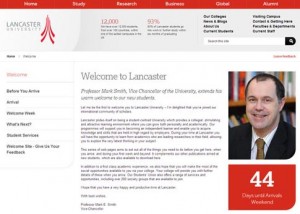As social media plays an increasingly large role in job-hunting and recruitment, the “public persona” is bound to become more and more important. Job seekers research the employer, so employers work to build a persuasive employer brand. (Or at least they ought to!)
So should job-seekers build their own “brands” by crafting a search-friendly online identity? It looks as if those who don’t may swiftly fall behind . . .
A recent CareerBuilder survey found that 45% of employers use social networking sites to screen applicants–and that’s double the number from last year’s result. That in itself is surprising, but I was even more amazed at this figure: 35% of employers report finding content on social networking sites that caused them not to hire a candidate. The top reason (53%) was “candidate posted provocative or inappropriate photographs or information,” followed closely by “candidate posted content about drinking or using drugs” (44%). Criticizing former employers, co-workers or clients came in at 35%, with poor communication skills (29%), discriminatory comments (26%), lies about qualifications (24%) and sharing confidential information from past employers (20%) rounding out the mix.
On the other hand . . . only 18% of employers reported that online screening had a positive effect on their decision to hire a candidate. In those cases, 50% of the time it was because a profile “provided a good feel for the candidate’s personality and fit with the organization,” while 19% of the time it was because other people posted good references about the candidate. In between, were some interesting reasons in the 35% range: “candidate was creative”; “candidate showed solid communication skills”; and “candidate was well-rounded.”
Unsurprising numbers: The industries most likely to include online screening (via social networking sites and/or search engines) in their review process were Information Technology and Professional/Business Services. The most frequently researched sites were Facebook (29%), LinkedIn (26%), and MySpace (21%), followed distantly by blogs and following candidates on Twitter.
Best for last: 14% of employers disregarded a candidate “because the candidate sent a message using an emoticon.” The surprise here was not that employers found the smiley-face a turn-off, but that there were enough emoticon-includers to produce a statistical effect. (Much as I love emoticons personally, they just can’t be used safely until you’re not only hired, but the boss of somebody.)
It will be interesting to see how these statistics change in months to come. The CareerBuilder survey (which tapped 2,667 hiring managers and human resource professionals) found that an additional 11% of respondents plan to add social site screening to their candidate reviews.
(Thanks to Danard Vincente for the great “search” image.)
Cynthia Giles has followed a serpentine career path from academia to publishing to marketing and design to information technology and corporate communications. There’s plenty of detail about this journey at www.cynthiagiles.com, but briefly--the common theme has been ideas, and how to present them effectively. Along the way, she became an accidental expert on data warehousing and business intelligence, and for the past ten years she has combined corporate contracting with an independent consulting practice that focuses on marketing strategy for smaller businesses and non-profits.
Having spent quite a bit of time looking for work, and anywhere from two weeks to two years inside a wide variety of American companies—she has given much thought to what works (and what doesn’t) when it comes to creating a great employment fit.



